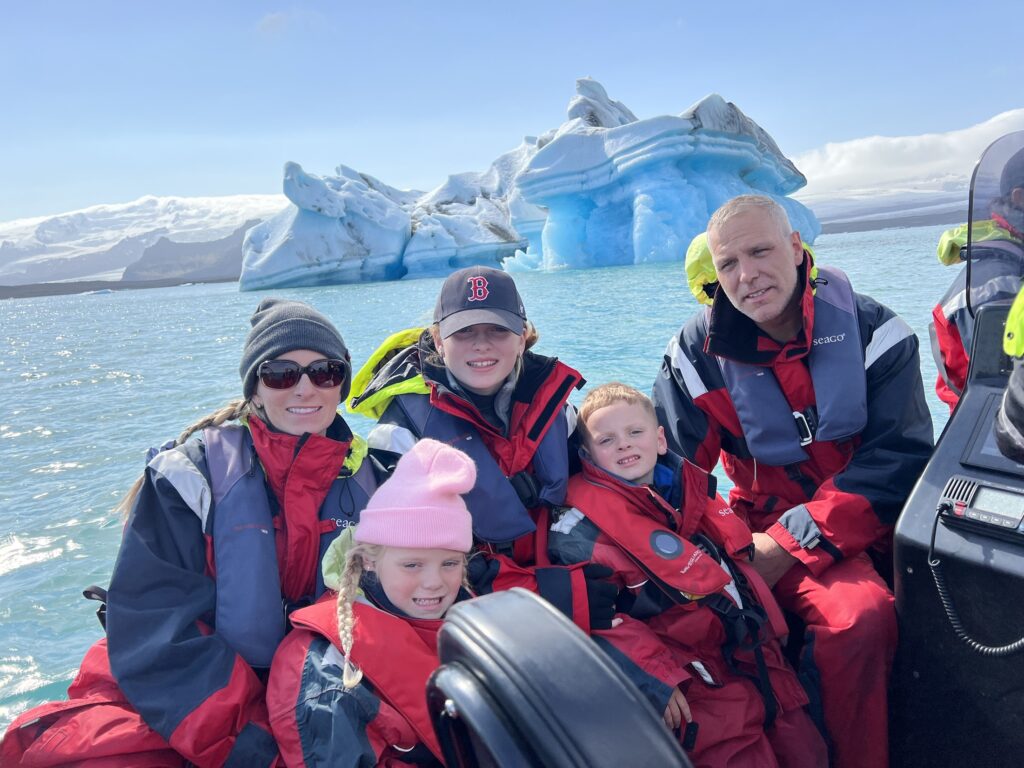now booking travel for 2026 and beyond

The Best Time of Year to Visit Iceland: What Month is Best to travel to Iceland?

Expanding on my last blog, where I discussed the different itineraries to consider when planning a trip to Iceland, it’s also important to consider the seasons so that you can choose the best time of the year to visit Iceland based on what activities you’d like to do.
When is the best time of year to visit Iceland?
Visiting Iceland is a year-round adventure, and each season in this breathtaking country offers unique advantages and challenges. Let’s explore the pros and cons of traveling to Iceland during each season:
Spring (March to May):
When you visit Iceland in the springtime, the country starts to emerge from the grip of winter, and the landscape undergoes a remarkable transformation.
Pros:
- Mild weather: Spring brings milder temperatures than the harsh winter, making it more comfortable for outdoor activities.
- Stunning landscapes: This is the season when you can witness vibrant green landscapes, blooming wildflowers, and numerous waterfalls coming to life.
- Fewer tourists: Spring is a shoulder season, so you’ll find fewer crowds at popular attractions.
- Wildlife opportunities: Spring offers chances for whale watching and birdwatching.
Cons:
- Unpredictable weather: Icelandic weather can be unpredictable during spring, with occasional rain and snow, so be prepared for changing conditions.
- Limited accessibility: Some remote areas may remain inaccessible due to lingering snow and ice, limiting your explorations. For example, The Highlands cannot be accessed yet.
Summer (June to August):
Summer in Iceland is the time of the midnight sun, long days, and a different kind of beauty.
Pros:
- Midnight sun: Experience nearly 24 hours of daylight, allowing for extended exploration and outdoor activities.
- Mild temperatures: Enjoy pleasant, cool weather, perfect for hiking, sightseeing, and outdoor adventures.
- Access to highland areas: Most of the country’s highland roads and hiking trails are open this season.
- Abundant wildlife: It’s a great time for puffin and whale watching.
Cons:
- Crowds: Summer is the peak tourist season, so expect larger crowds at popular destinations.
- Higher prices: Accommodations and tours can be more expensive during this time, so it’s essential to budget accordingly.
- Advanced planning: Given the popularity of this season, you may need to plan and book well in advance to secure accommodations and tours.

Autumn (September to November):
As summer transitions into autumn, Iceland takes on a whole new charm with stunning fall foliage.
Pros:
- Fall colors: Witness the stunning autumn foliage and golden landscapes, creating picturesque backdrops for your journey.
- Lower prices: Accommodations and tours become more affordable, and the crowds start to thin, offering a more serene experience.
- Northern Lights: With increasing darkness, autumn provides opportunities for Northern Lights viewing.
Cons:
- Shorter days: As the days grow shorter, there will be less daylight for exploration, so plan your activities accordingly.
- Road closures: Some mountain roads and highland areas may close as winter approaches, limiting access to certain regions.
Winter (December to February):
Winter in Iceland brings a sense of enchantment. However, it also comes with its own set of challenges.
Pros:
- Northern Lights: Winter is the best time to witness the mesmerizing Northern Lights, a bucket-list experience for many.
- Snow and ice activities: Enjoy snowmobiling, ice caves, and skiing opportunities, creating a winter wonderland.
- Fewer tourists: Experience Iceland in a more serene state with fewer tourists, allowing for a more intimate encounter with the landscape.
- Cozy experiences: To counter the cold, you can enjoy hot springs and indoor activities, creating a snug and heartwarming experience.
Cons:
- Harsh weather: Winter weather can be severe, with freezing temperatures and strong winds, so be prepared for challenging conditions.
- Limited daylight: Days are extremely short, offering limited time for exploration, so plan your activities accordingly.
- Road conditions: Some roads may be impassable due to snow and ice, limiting access to certain areas.
Ultimately, the best time of year to visit Iceland depends on your preferences and interests. Each season offers unique charm and activities, so consider your priorities and plan your Icelandic adventure accordingly!
Are you ready to start diving into planning your trip? Check out my other Iceland Blogs!
Do you have more questions? Join my private Facebook community to discuss more, or check out my highlights on Instagram to watch us travel through the country!
May 7, 2024
Leave a Reply Cancel reply
Destinationdaystravel
DESTINATION DAYS TRAVEL 2024 All Rights Reserved
Florida SOT #ST42501
Menu
join the club
Stay in the know and get the latest updates, deals and more!
Be the first to comment